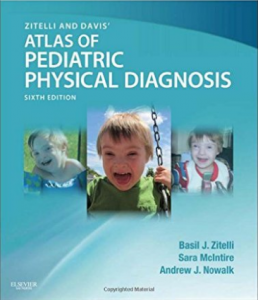How to prepare for and pass American Board of Pediatrics (ABP) exam
Prepping for the American Board of Pediatrics (ABP) Exam: A General Pediatrician’s Perspective
Zebra diagnoses everywhere!
You know that mythical zebra in your differential diagnosis, the one rarely seen in practice but
commonly encountered in testing environments? Well, they are abundant on the ABP exam. Judging
from the question content, one might assume that the majority of children seen by
pediatricians have rare genetic syndromes: Beckwith Wiedemann syndrome, Klippel-Trenaunay
syndrome, Diamond Blackfan syndrome, Hurler’s syndrome…I could go on and on. Much to the
contrary, as a general pediatrician, the bulk of my time is spent on well child exams and urgent
visits for otherwise healthy children. But the ABP loves a zebra, so you should too, or at least
while you are studying for boards.
The American Board of Pediatrics (ABP) exam by the numbers
The exam consists of 330-350 questions. The questions are divided over 4 exam sections, each
1 hour and 45 minutes long. If you do the math you end up with about 75 seconds per
question. Yes, you read that right, 75 seconds!! There is not a lot of time to mull over the
question. There is no penalty for guessing, so if you don’t know an answer take your most
educated guess and move on. You can always flag the question for review and come back to it
if you end up with time at the end of the section. In between the sections you also get 2 – 15
minute breaks and 1 – 60 minute lunch break. All the breaks are optional, but what person can
make it through 7 hours of testing without at least 1 bathroom break?!? Definitely not me. I
made a point to leave the testing room during each break period, stretching my legs, using the
bathroom, and grabbing some water. I didn’t end up using the whole 60 minute lunch break.
By that halfway point, I was in the zone and wanted to get back and finish the test, the end was
in sight!
The ABP publishes a content outline on their website:
https://www.abp.org/sites/abp/files/pdf/blueprint_gp_2016.pdf.

Click on the above image to zoom in.
Warning, this is a lengthy,
detailed document. At first glance this seems like an overwhelming summary that could never
possibly be mastered, but I think it’s at least worth looking at. I used it during my board review
course and would quickly consult the content specs to see what sorts of things the ABP
expected us to know about a certain topic. You could easily use these with your review text
and briefly glance at the content specs before starting your studying for the day.
Notes, Flashcards, and Review Courses
Speaking of review texts, pick one and stick to it, working through each section and focusing on areas where
you feel less comfortable. I made my own notes as I went through the review text and created
flash cards for high yield content. I had flash cards for all the syndromes and developmental
milestones and would go over these frequently to ingrain them in my brain.
I was fortunate that my institution offered a highly regarded board review course. This type of
review is not for everyone, but I felt that it helped solidify many of the topics I had been
studying and complemented my individual study time well. I spent 6 days in the UCLA Board
Prep course in the grand ball room of the Marriot in Marina del Rey. The weather outside was
amazing, high 70s, the sun sparkling along the water’s edge. Inside the board review the air
conditioning was on high, I shivered with a hoodie on to protect my head from the cold drafts
above. The cold did however keep my mind sharp as we went through an exhausting amount
of material. The long days in board review were like a mini boot camp, preparing me for the
extensive testing day.
Don’t forget about Pedialink
You have access to 3 years of online PREP questions through Pedialink, which is created by the American Academy of Pediatrics (AAP). This is a great resource
for practicing exam questions, but keep in mind that these questions are written by the AAP,
not the ABP. The questions, and the answer explanations, are very detailed. Make sure you
understand the right answer and its corresponding explanation. Do not get too bogged down
with the explanations for the wrong answer choices. The questions on the actual exam are
somewhat different, containing less detail and requiring you to go with your gut instinct in
many instances instead of being able to use exact details to eliminate all but one answer choice.
Worth a thousand words, pictures are in dozens of questions
The ABP loves questions with pictures. The questions require you to recognize a physical exam
finding such as a rash or dysmorphic feature and correlate with a particular diagnosis before
going on to answer a question about work up, management, or pathophysiology. The ABP likes
to recycle pictures. You should review Zitelli’s Atlas of Pediatric Physical Diagnosis while
studying, and make sure to look through quickly again a couple nights before the test to refresh
your memory.

Studying Zitelli’s images are high yield for the exam.
With some preparation, you will be ready for the ABP exam! Give yourself some time to relax a
little, hang out with friends, and exercise during board preparation. Keep your body and mind
healthy. Good luck!
Nicole Hetzer is an Assistant Clinical Professor at the David Geffen School of Medicine at UCLA. She is a General Pediatrician practicing in Porter Ranch, California.








